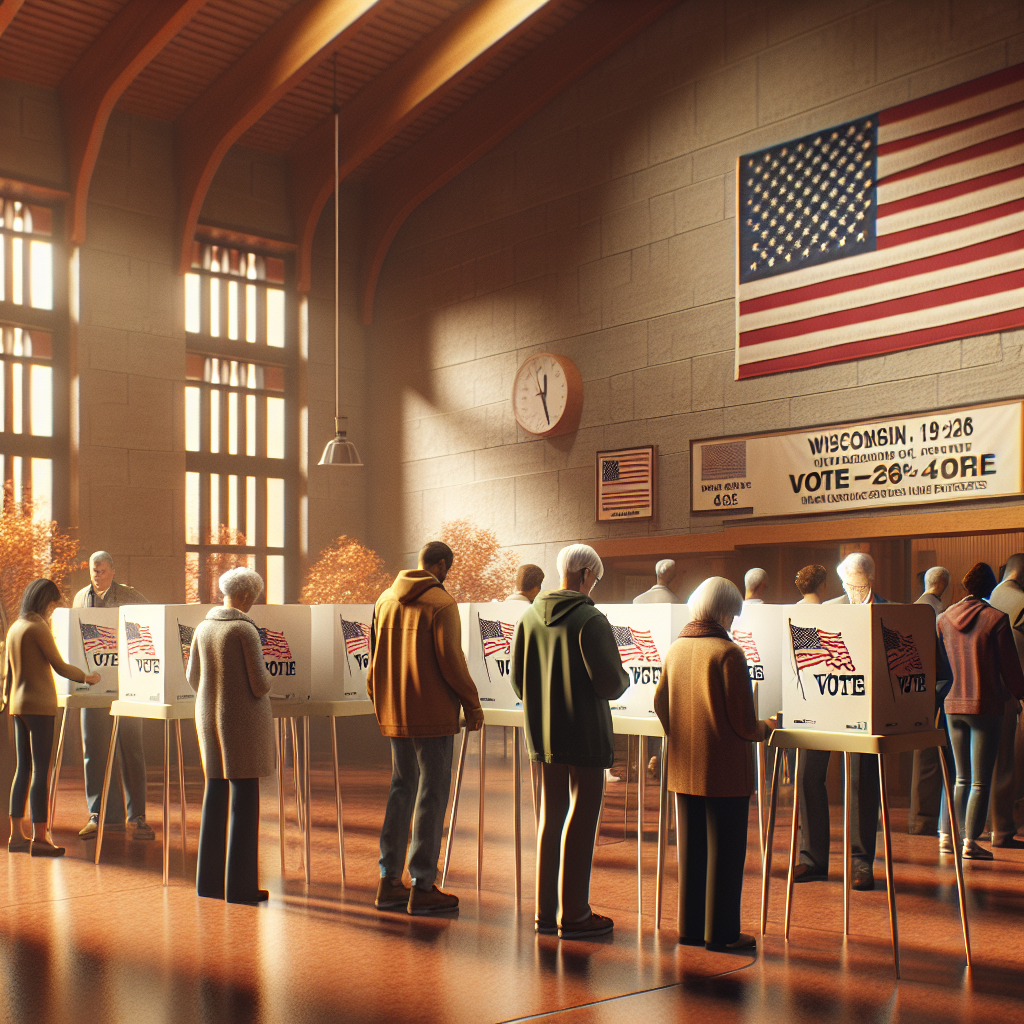
Wisconsin Supreme Court Election: Insights and Implications
Introduction to the Contested Election
The upcoming Wisconsin Supreme Court election, which concludes this week, is among the most discussed judicial races in recent U.S. history. This election will decide whether the court leans conservative or liberal, reflecting broader national sentiments amid President Donald Trump’s second term. With Elon Musk’s involvement and significant funding pouring in, this election is poised to make waves, not just within Wisconsin, but across the nation.
Polls Indicate a Tight Race
Voter Preferences
A series of polls indicate a neck-and-neck contest between Democratic candidate Susan Crawford and Trump-backed Brad Schimel. According to a recent survey by SoCal Strategies, Crawford holds a slight edge over Schimel with 50% support compared to Schimel’s 42%. This boost in numbers is attributed to increased enthusiasm among the Democratic base, which appears more motivated to participate in this off-year election.
- SoCal Strategies: Crawford 50%, Schimel 42%
- Wisconsin Manufacturers & Commerce: Crawford and Schimel tied at 47%
- TIPP Insights: Candidates tied at 38%
Despite these figures, a significant portion of the electorate remains undecided, suggesting the final outcome is still very much in play as the timer ticks down to election day.
Candidates in Focus: Schimel vs. Crawford
Brad Schimel: A Conservative Contender
Brad Schimel, currently a judge in Waukesha County, is contending for a spot on the Wisconsin Supreme Court. Previously, he served as the state’s attorney general and faced a re-election defeat in 2018. With substantial backing from conservative organizations like Wisconsin Manufacturers & Commerce, having donated over $4 million, Schimel’s campaign is robustly funded.
Susan Crawford: The Progressive Voice
Opposing Schimel is Susan Crawford, a circuit court judge from Dane County, which includes liberal-leaning Madison. Before her tenure on the bench, Crawford built a career as a private attorney. Her campaign is buoyed by strong Democratic enthusiasm, especially as the state’s left-leaning constituents demonstrate heightened election interest.
Race Dynamics and Public Opinion
Shaping Public Perception
As election day approaches, public interest and candidate visibility have surged. The Marquette Law School Poll identified a significant portion of voters being uninformed about the candidates. With 38% of those surveyed unfamiliar with Schimel and 58% with Crawford, there is room for both campaigns to sway undecided voters.
The increased attention is fueled by high-profile endorsements and substantial financial inputs, making this race not only about judicial values but also a broader political statement.
The Broader Implications for the Trump Administration
This judicial race doubles as a litmus test for President Trump in his second term. Wisconsin’s demographic profile—a microcosm of national diversity—makes it a critical battleground. Among swing states, Wisconsin’s electorate reflects diverse views, with recent polls showing a polarized opinion on Trump’s presidency.
Key Demographic Insights:
- Median age in Wisconsin: 40 years
- Median income and educational levels align with national averages
- Racial composition: Predominantly white (79% in 2023), more so than the national average
With Trump narrowly winning Wisconsin in previous elections, the state serves as a vital indicator of his current political standing.
Elon Musk’s Role and Influence
Notably, Elon Musk has actively participated in boosting Schimel’s candidacy with significant financial contributions totaling around $20 million. Musk’s appearance in Wisconsin aimed to galvanize votes for the conservative slate but was met with mixed responses. According to Marquette’s poll, Musk’s favorability rating stands at 41%, with 53% holding a negative view—opinions naturally divided along partisan lines.
Conclusion: A High-Stakes Judicial Election
As Wisconsin prepares to head to the polls, the outcome of this Supreme Court race is poised to influence national discourse profoundly. This election, amidst historical investments and intense partisanship, will reflect broader trends and potentially signal shifts in the American political landscape.
Wisconsin’s Supreme Court election is not just another judicial race; it has become a focal point where local issues intersect with national dynamics, setting the stage for what might be one of the most consequential elections in recent history.
Sources: https://www.usatoday.com/story/news/politics/2025/03/31/polls-wisconsin-supreme-court-election-crawford-schimel/82743483007/

